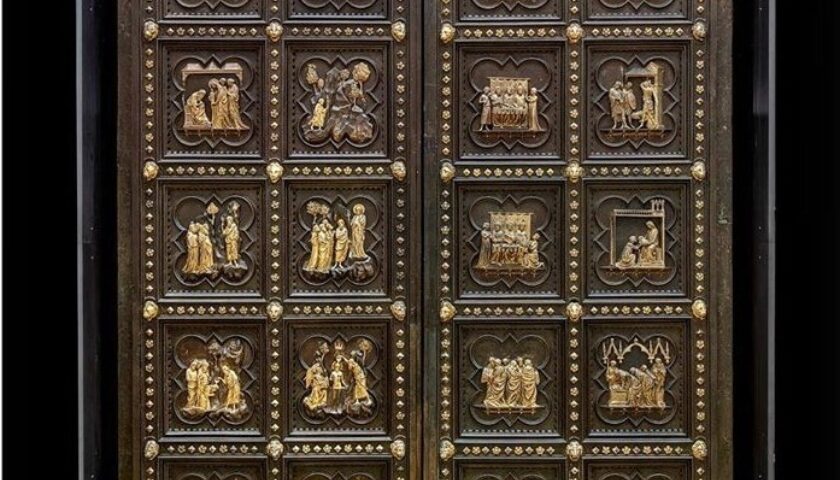In the footsteps of Cesare Brandi
Opinion – 12 Oct 2020
What connects Goppion with the celebrated art critic, historian and scholar Cesare Brandi?
In his landmark collection of essays Il restauro. Teoria e pratica (The Restoration.Theory and Practice) first published in 1963, Brandi dedicated a chapter to 'preventive restoration'. Two of the works he included as examples would later become important restoration projects that Goppion proudly contributed to: the Corporal of Orvieto and the doors of the Baptistery of Florence.
Brandi was a vocal critic of the lack of attention Florentines devoted to the protection of their most important works, citing as an example the relocation of two works by the 15th-century Florentine painter Paolo Uccello. Uccello’s two frescoes from the Green Cloister of the Santa Maria Novella were damaged during the catastrophic flood of 1966. In accordance with then-common practice, they were later detached, restored and relocated in their original position outdoors, ‘to finish deteriorating’, as Brandi commented with fierce irony.


At that time the doors of the Baptistery were also at risk. They remained outdoors, to ensure public enjoyment during provincial folk festivals and celebrations such as the ‘flight of the dove’ at Easter. But they were also exposed to the inclemency of the climate and damaging industrial smog.
Brandi’s great hope was that the doors of the Baptistery would one day be protected by ‘an air-conditioned, airtight crystal case’ – as display cases were called in his day. And that is exactly what Goppion achieved between 2012 and 2015. You can see these works now safely on display in Goppion's fuoriclasse showcases at the Museo dell'Opera del Duomo in Florence.

Brandi’s judgement was more favourable on the treatment of the 14th-century Reliquary of Ugolino da Vieri. There, the ecclesiastical authorities were faced with the risks 'the very fragile translucent enamels of the monumental reliquary' ran every time it was used as part of the Corpus Christi procession. To protect it, they willingly renounced what was a founding tradition of the city's identity, allowing the Corporal 'to remain in the church and the procession to take place without it'.
In this instance too, Goppion later realized Cesare Brandi's dream and Orvieto’s precious Reliquary is now preserved and protected in a one-off display case. The case was designed in close collaboration with the Istituto Centrale del Restauro, which Brandi helped to found and then directed.
More than 25 years later the case is still an admirable example of technology at the service of heritage conservation. This is thanks to the innovative pantograph-lift opening system, which allows the movement of the work without tilting it, the special anti-vibration system, the high airtightness and humidity/microclimate control system.
Today, visitors to the cathedral’s museum can still enjoy this exquisite medieval artwork in all its glory. Brandi would have been pleased.
Share